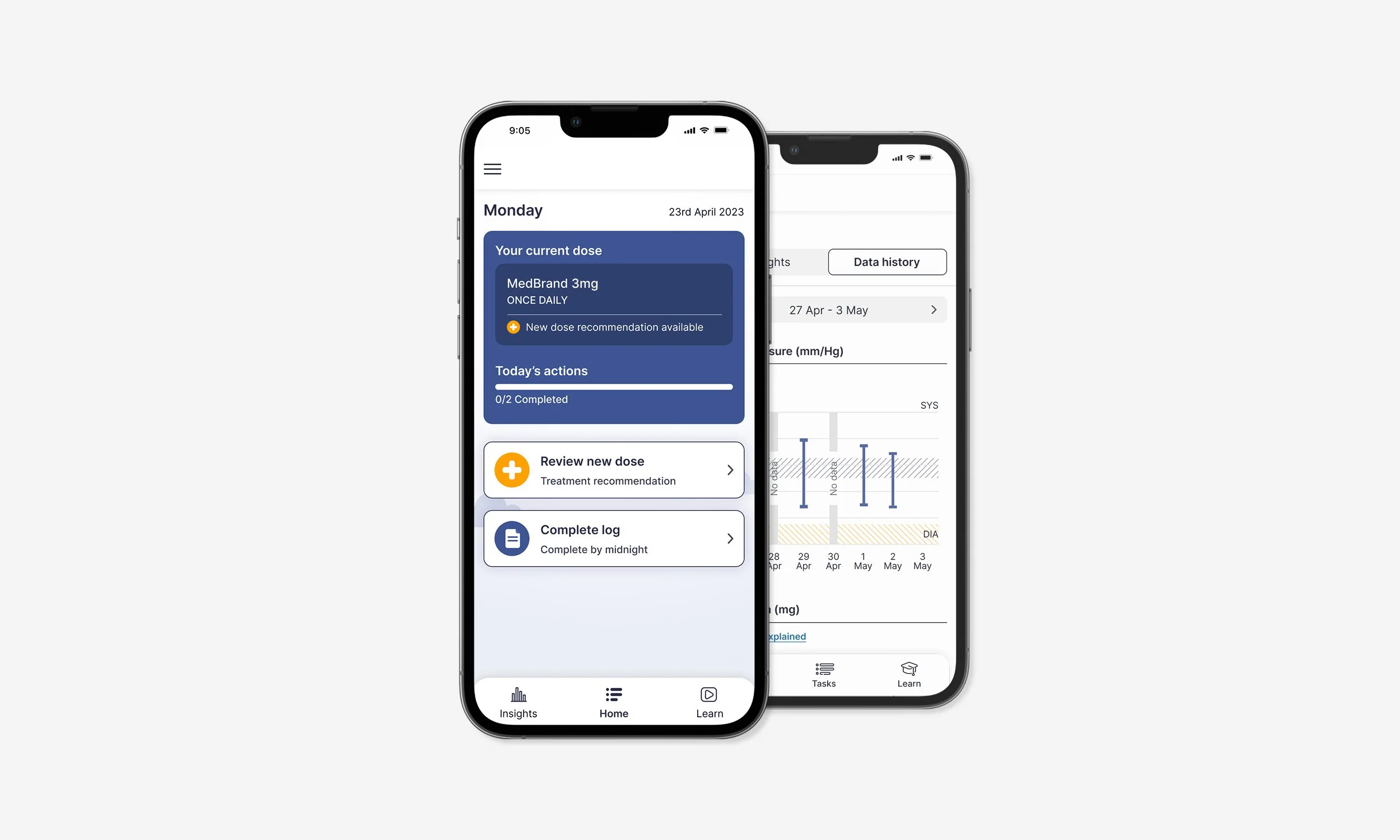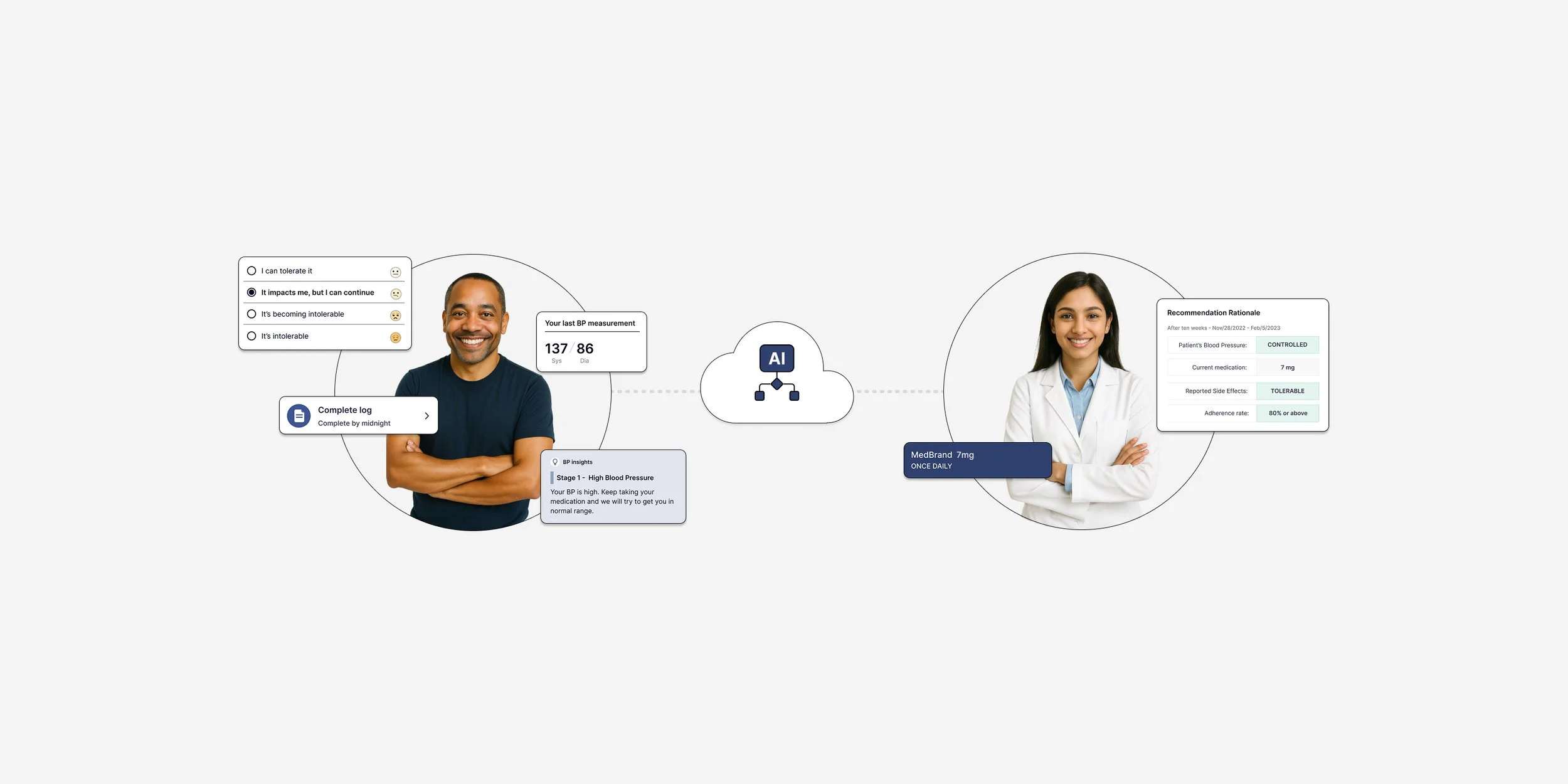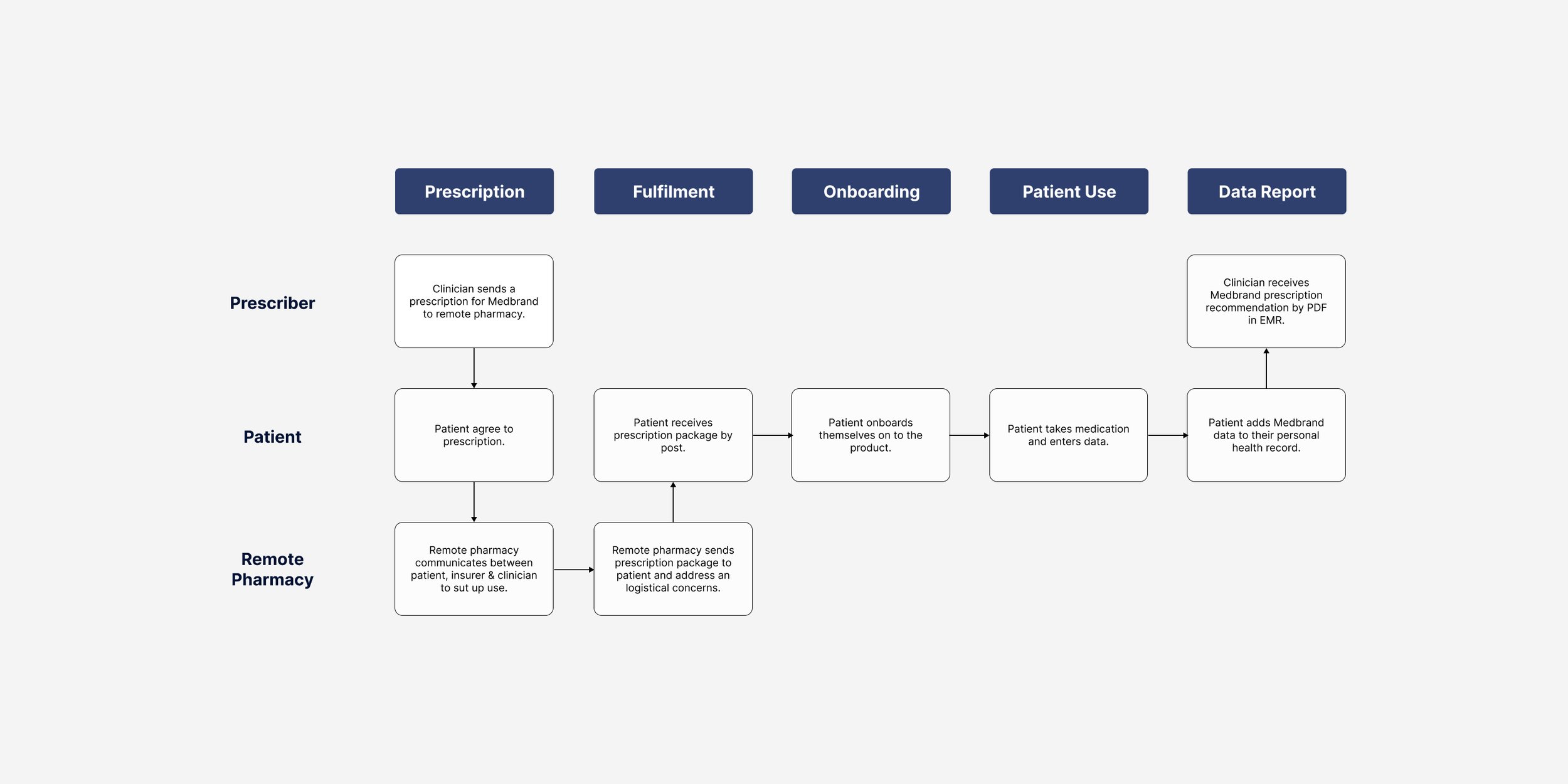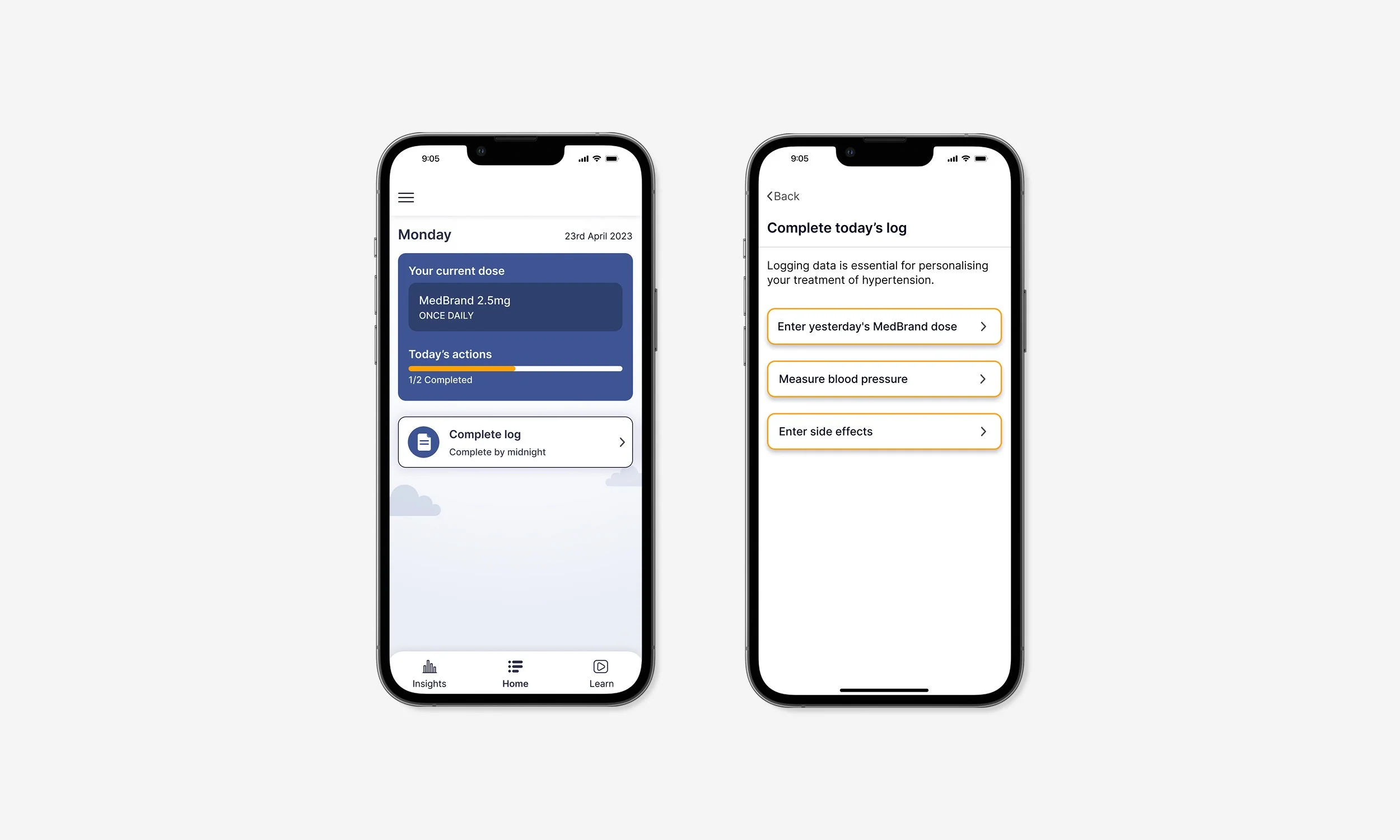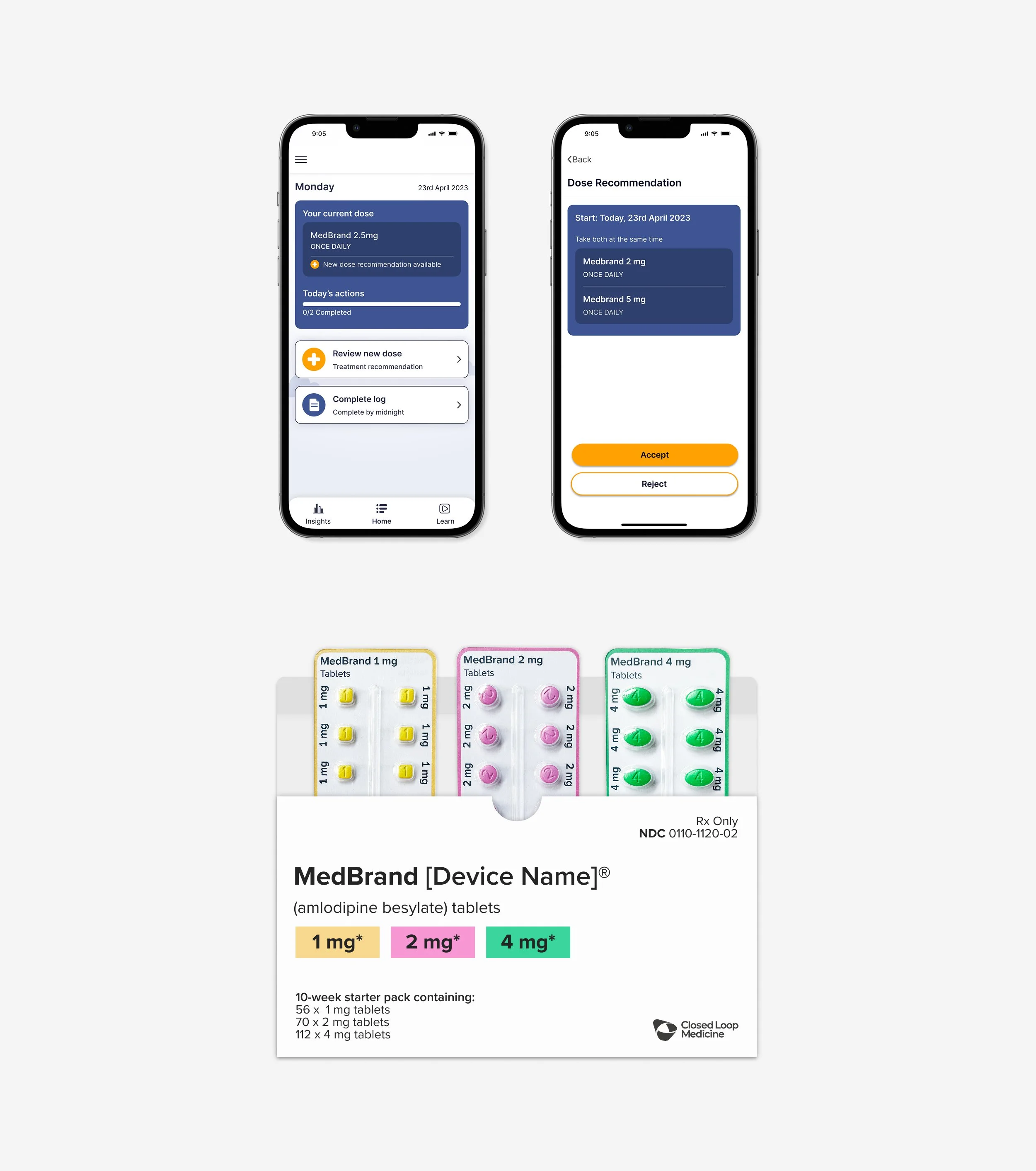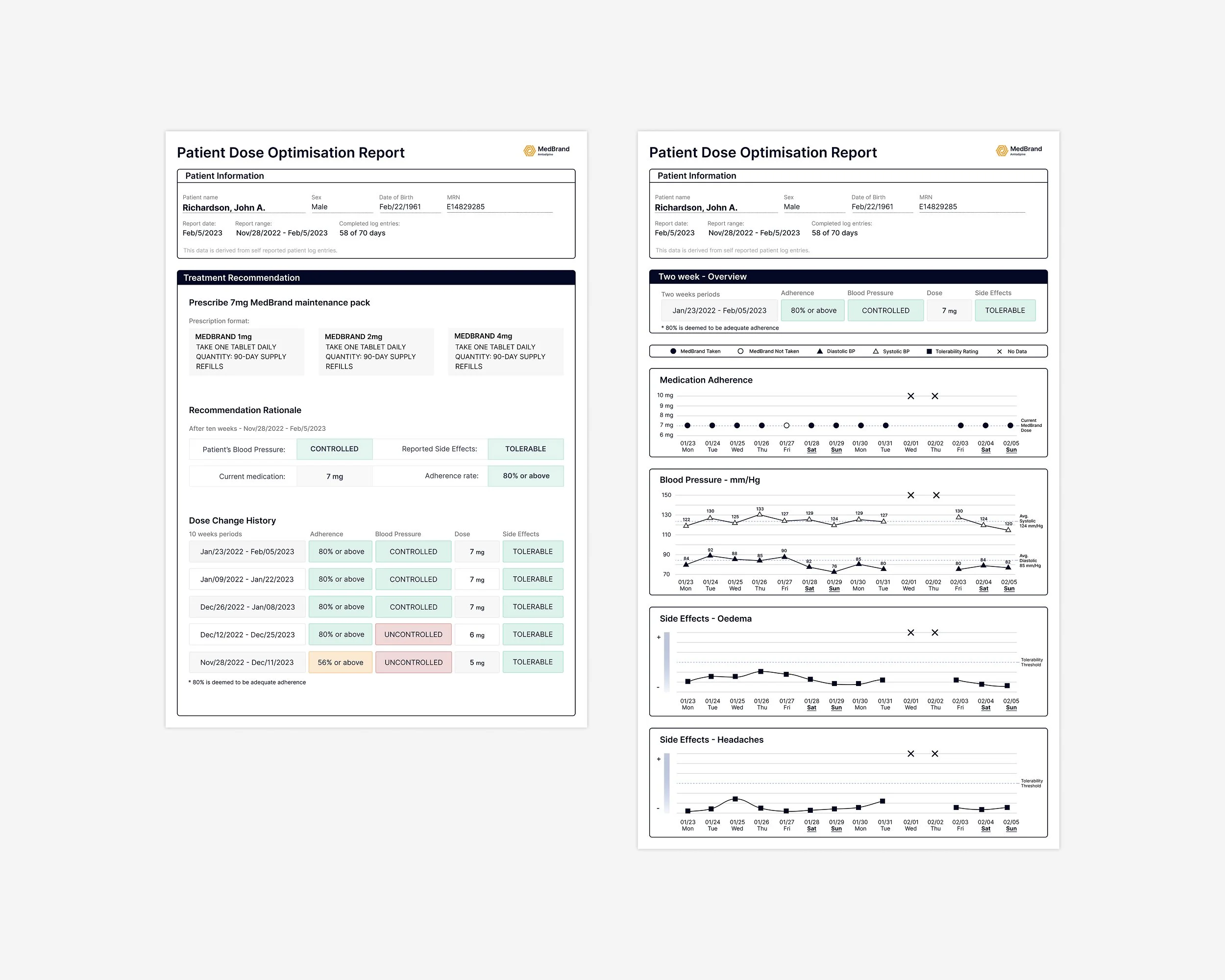Dose Optimisation AI Platform
Operationalising a rules-based AI for pharmacy & clinical use
Amlodipine, a common hypertension treatment, is frequently discontinued early due to dose-related side effects. Dose optimisation reduces side effects, improves adherence, and may lower the risks of heart failure and type 2 diabetes.
Role
As Product Design Director, led product and design development for Closed Loop Medicine, translating a rules-based AI into a healthcare-ready solution. My work spanned early scoping, design strategy, workflow integration, and ensuring market access by meeting clinical needs and regulatory requirements.
Deliverables
Product Definition & Vision
Clinical & Pharmacy Integration
UI and UX Design
Packaging Design
Service Design
Usability Engineering File
Outcomes
Successful clinical trial
Supply-chain viability proven
Product-experience viability proven
Partnership secured with Pharmanovia
Prescribe-able Dose Titration System
The dose optimisation system integrated seamlessly into clinical workflows and pharmacy supply chains. Clinicians could prescribe a titration pack, enabling patients to onboard autonomously and, with AI support, titrate to an effective dose, minimising side effects and maximising efficacy. Upon completion, clinicians received a personalised maintenance prescription recommendation.
To realise this system, I collaborated with product and software leads to define its strategic foundations. We mapped logic rules for dose recommendations, modelled delivery frameworks balancing pill burden and adherence, and explored care integration models. I also worked with regulatory and pharmacy experts to ensure compliance with prescribing norms and designed the full interaction journey, from initial prescription to AI-informed re-prescription, using existing infrastructure.
Simple Onboarding at Scale
The onboarding system supports self-starting across diverse treatment types, ensuring patients can begin therapy safely and independently. It works across multiple drug form factors and packaging types, all within existing pharmaceutical supply chains and regulatory frameworks in the UK, EU, and US.
To achieve this, I led a cross-functional team to evolve our onboarding platform into a scalable system. We reviewed packaging and titration protocols, collaborated with partners to design modular solutions, and developed prototypes for each medication form. Usability testing helped refine every detail, from pack layout to messaging and activation. We worked closely with pharmaceutical manufacturers to deliver production-ready packaging that maintained efficiency while improving patient experience.
Reliable Input Data
For AI-supported dose optimisation to be effective, patients must enter accurate daily data. The experience was designed to help patients build reliable routines, reduce cognitive load, and stay consistently engaged - laying the foundation for accurate, real-world decision-making by both clinicians and algorithms. In this use case data entry included blood pressure, side effects, and medication adherence.
I worked with researchers at the William Harvey Research Institute to define essential metrics and test input methods. We prototyped manual and connected workflows, ran simulations, and deployed the solution in two clinical trials. A simple routine manager and notification system outperformed connected devices, supporting consistent data entry across a challenging patient groups in the US and UK.
AI directed dose changes
New dose instructions periodically appear in the patient’s daily routine, guiding them to titrate up or down. The design leverages familiar prescription formats to eliminate ambiguity, and the packaging ensures each dose form is clear and hard to misinterpret. Together, these features enabled safe, effective, and mission-critical autonomous dose changes.
I collaborated with pharmacists to align with prescribing standards, worked with the product team to prototype app and packaging designs, and applied usability engineering to identify foreseeable risks, implement controls, and validate their effectiveness through patient testing and ensuring the solution was submission-ready.
Engagement & adherence
In clinical trial we found that Patients were inherently motivated to reduce life-altering medication side effects. Having already made it easy to learn the system, complete data entry tasks, and see the impact of their efforts, we were able to spend time building an insights engine to reinforce progress and highlight opportunities for improvement. This acted as a kind of cheerleader throughout the journey to keep them on track.
To develop this feature, I worked with the product team to map scenarios related to poor data entry adherence and identify health implications visible in the data. We distilled these into a standard set of insights to help patients interpret their data and stay adherent to the titration process.
AI supported prescription changes
Clinicians receive auditable prescription change recommendations written directly to the patient’s EHR record. This allows them to review the appropriate maintenance dose and understand how it was determined through the dose titration system.
The interface for the patient report was extremely easy to develop as it was derived from the logic already mapped out in the systems design. EHR integration however, required detailed systems research and an flexible underlying service design that could be adapted to differing geographies and EHR provider systems.
Project Data
User need
People want the simplicity of single-pill dosage forms for life-limiting chronic diseases such as hypertension, without a reduced quality of life from side effects like oedema (ankle swelling).
Context
Current dosage options can be limited, for example, in the UK amlodipine is typically available only in 5 mg and 10 mg strengths. At CLM, we ran a trial showing that 88% of patients could be controlled at lower doses, with 35% controlled at doses as low as 1 mg.
Value proposition & business case
By providing titration services and lower-dose options through existing pharmaceutical supply chains, providers and patients gain access to more effective, better-tolerated treatments. The result is improved outcomes and reduced costs for the healthcare system.
Technologies
Amlodipine (and other medications); behavioural science; dose-optimisation algorithms; smartphone applications; medication-packaging systems; clinician-facing web application; AWS back-end services.
